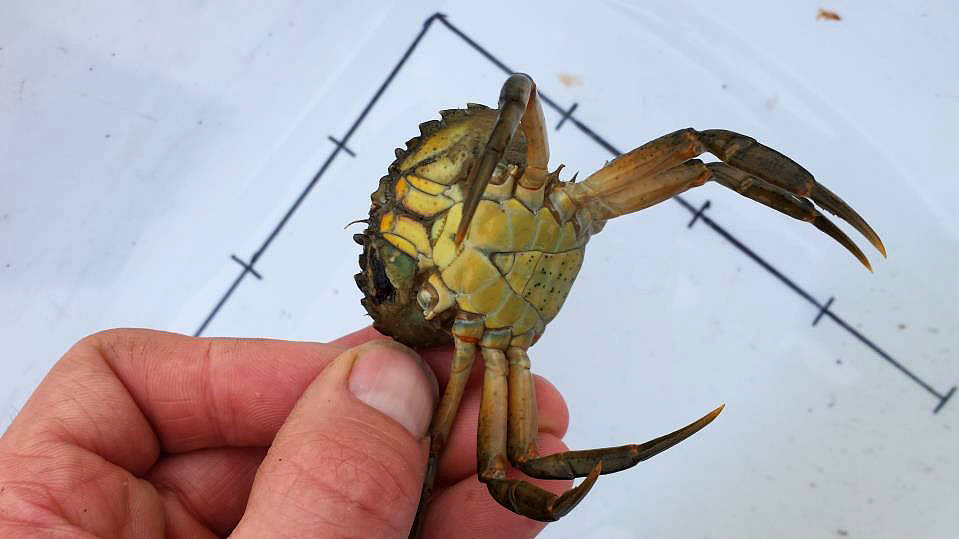An invasive crab species scientists and locals feared to find on the North Olympic Peninsula was discovered in traps last week in Dungeness Bay.
Staff and volunteers at the Dungeness National Wildlife Refuge found at least 13 European green crab in Graveyard Spit, across from Dungeness Landing, and continue to investigate just how prevalent the species may be on the Dungeness Spit.
Emily Grason, program coordinator for Washington Sea Grant’s Crab Team, said these are the first of the crab to be found in inland Washington since the crab was captured in August 2016 in Westcott Bay off San Juan Island in Puget Sound.
Sea Grant officials say the European green crab, a small shore crab measuring up to 4 inches inches across, is native to the Atlantic Ocean and Baltic Sea and is known for damaging the soft shell clam industry in Maine.
It will eat clams, oysters, mussels, marine worms, potentially harmful to birds and small crustaceans.
The green crab is distinctive for its five spines on the outside of the eye of the shell but its name can be misleading because its color can be green, brown or reddish typically with orange joints, Sea Grant staff said.
Lorenz Sollmann, deputy project leader at the Washington Maritime National Wildlife Refuge, said the green crab will compete with native species and affect the ecosystem.
“We’re trying to keep the ecosystem healthy and keep the playing fields even,” he said.
With 13 green crabs found so far, Grason said the number isn’t alarming but they know more are out there.
“When you look at pictures of different levels of abundance in other parts of the world there are piles,” she said. “In our part of the world we tend to grow larger green crabs who also can have multiple broods per year so it doesn’t take multiple crabs to have a larger problem.”
Grason said finding the crab isn’t a complete surprise since the crabs have been spotted before, specifically in Grays Harbor where there are increases in growth periodically.
The green crab is beginning its mating season now, she said, so they aren’t as attracted to bait in traps after molting.
“That’s why responding swiftly is important before we end up with eggs and larvae,” Grason said.
Trapping
Staff and volunteers at the Wildlife Refuge went out four days last week placing traps, Sollmann said, and so far the green crab were only found in a channel of the upper part of the lagoon in Graveyard Spit.
“We’re covering as much of the refuge as we can,” he said.
“We’re trapping in new locations this week just to rule out they are there. It’d be great, if all three days this week while working with the tides we come back with nothing. That’s good.”
Of the green crabs trapped so far, Sollmann said they haven’t molted yet, which means they haven’t begun breeding.
Depending on progress this week, crews will continue to trap along the Dungeness Spit, Sollmann said, and scale back if they continue to have sessions with no green crab findings.
Staff with Jamestown S’Klallam Tribe said they plan to check Sequim Bay this week for green crabs.
Efforts to seek out and contain the European green crab continue with the Crab Team monitoring more than 30 sites with volunteers.
Sea Grant staff estimate there are at least 400 sites in Puget Sound, the Strait of Juan de Fuca and the San Juan Islands possessing at least one ideal habitat feature for European green crabs.
Reach the Crab Team to report a European green crab sighting or for information on the organization’s efforts, email crabteam@uw.edu or visit https://wsg.washington.edu/ and click “Crab Team.”
Reach Matthew Nash at mnash@sequimgazette.com.


